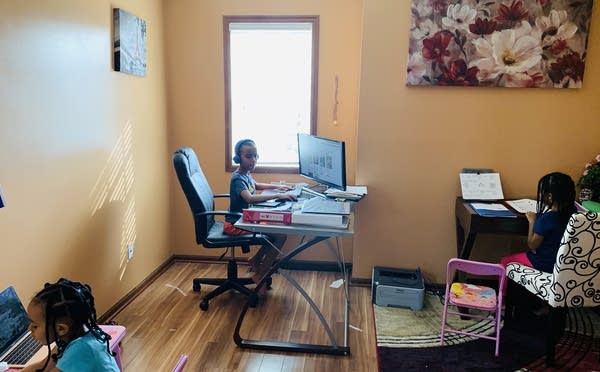Minnesota’s schools won’t reopen this academic year: Here’s what you need to know

Five-year-old Iman Aman, 10-year-old Imran Deksiso and 6-year-old Elham Deksiso complete schoolwork on the first day of distance learning at home.
Courtesy of Zinet Kemal
Go Deeper.
Create an account or log in to save stories.
Like this?
Thanks for liking this story! We have added it to a list of your favorite stories.


